Cat Collar Training & How To Nail It In Just 3 Steps
Surprising as it might seem, cats actually adjust pretty well to collars! So with a cat collar, you can ID, track, and keep your feline friend safe. But before we begin - here's how to get your cat to wear it in the first place.
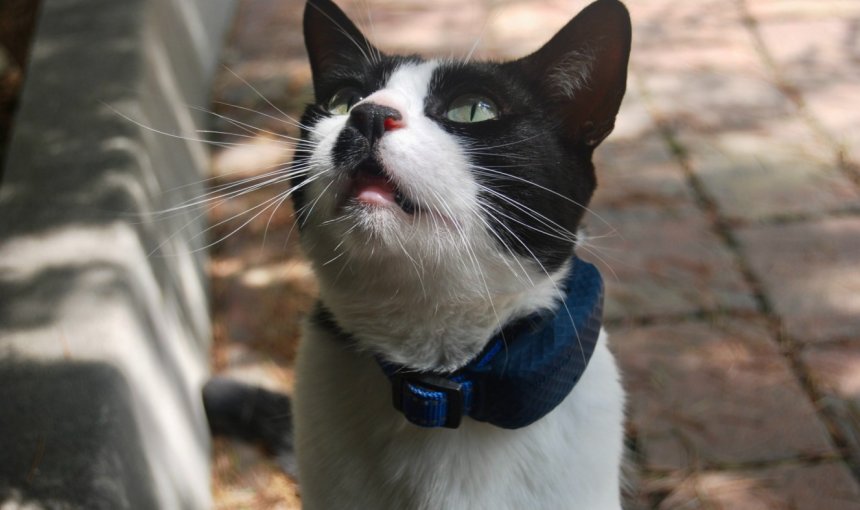
Whether you have an indoor or an outdoor cat, here’s the bottom line: both are likely to go missing at some point. And in a world where only around 2% of missing cats are reunited with their parents, attaching an ID tag or GPS tracker to their collar can help keep your missing your cat safe. Bringing up the million dollar question: how to train a cat to wear a collar in the first place?
Now you wouldn’t be the first to wonder whether cat collar training makes sense. But with a little time and patience, cats can and do take to collars pretty well. Plus, a collar helps signal that they have a home and family.
(Which lowers the chances of kitty being “adopted” by a well-meaning neighbor. Or ends up at a local animal shelter – where they might even be euthanized, if left unclaimed.)
So in this post, we’ll explain everything you need to know about cat collar training – and how to train your cat to wear a collar in just 3 steps. Let’s dive right in.
Should cats wear collars?
In a nutshell: with time, patience, and effort, most cats can and do get used to wearing a collar. And they’ll be safer in the long run for it.
Though you wouldn’t be the first to wonder whether they should be wearing collars – or how to get a cat to wear a collar without a fight.
But with proper cat collar training, fit and selection, and the right amount of care, most cats take pretty well to collars. In fact, here’s what one study from the Ohio State University1 found after researching 538 cats and their collars:
- Most cats (72.3%) wore their collars successfully.
- Cat owners expected their cat’s tolerance to wearing a collar to be lower than it actually was; in other words – cats are better at wearing collars than we give them credit for.

- Only 7.1% of cats lost their collars – so it’s wise to invest in a microchip and GPS tracker for max security.
- Veterinarians should recommend that all cats wear collars, since they can help identify your cat if they get lost.
⚠️ Less than 2 percent of lost cats are returned to their owners2. Getting a cat to wear a collar with ID tags and a cat GPS tracker however, can change that.
The perks of cat collar training
No matter their age or personality, getting your cat to wear a collar is 100% possible with some patience, positive reinforcement, and trial and error. So as mentioned above, getting your cat to wear a collar can have a bunch of perks. Including:
A higher chance someone can identify your lost cat
When your cat grows used to their collar, you can attach an ID tag to it with your contact info. Now if someone finds your cat, they can get in touch with you to let you know they’ve found your cat.
This can help make it less likely your cat gets mistaken as a stray. (Which might lead them to be taken to the local animal shelter instead – where your cat might even be euthanized after a few days if you don’t claim them!)
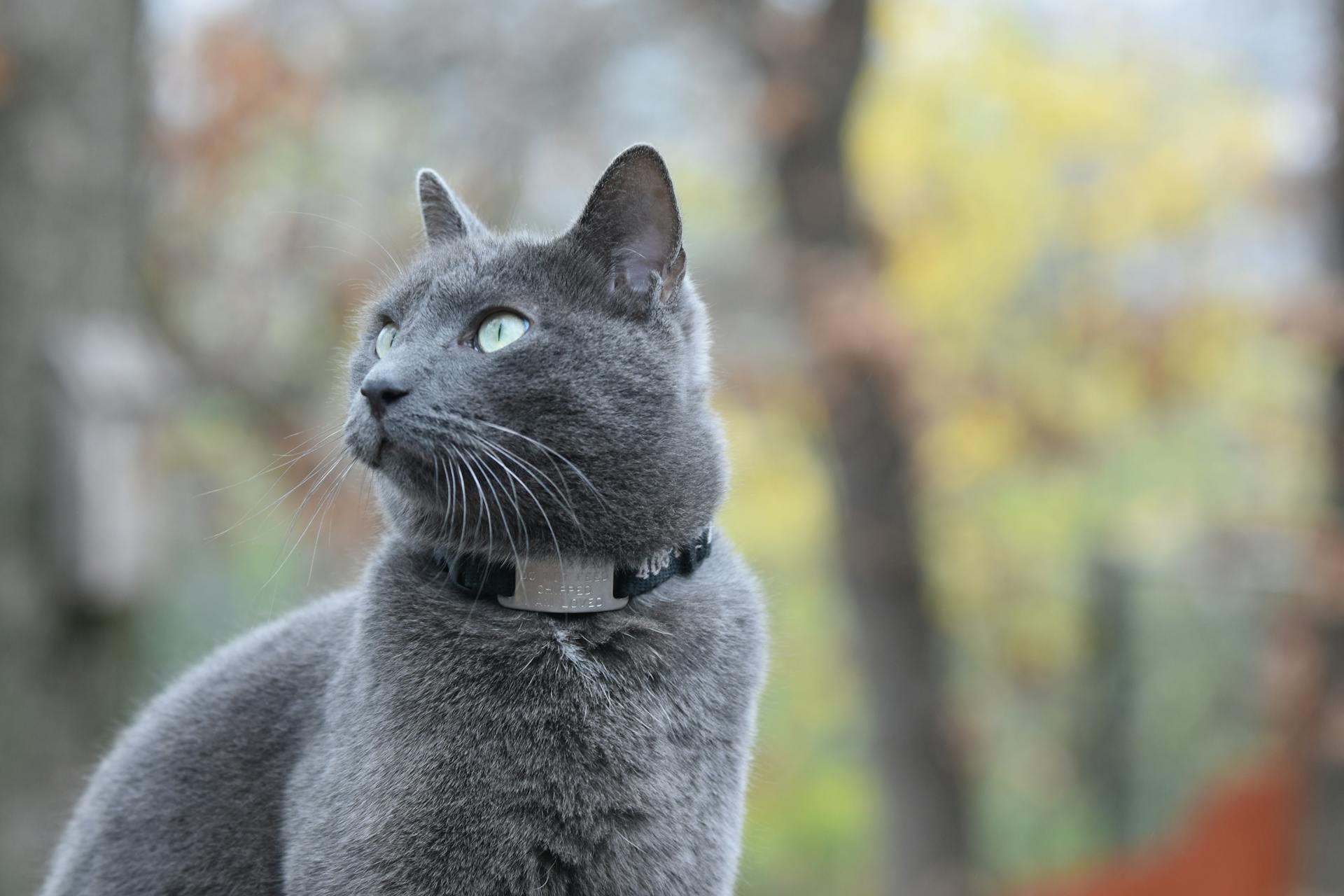
At the same time, an ID tag can always fall off or go missing. (Especially the more adventurous your cat is.) So we’d always recommend you invest in a microchip cat ID as well.
- A microchip works like a permanent ID card for your cat. Aka, a vet or a local shelter can scan your cat’s microchip to find your contact details – and get in touch with you.
- Plus, it’s a quick, painless procedure which is both affordable and also widely available in most towns and cities.
⚠️ Microchipping or equipping your cat with some kind of ID might even be required by law in some countries and US states (like Hawaii and California.) Make sure to check out your local shelters or vet clinics to find out where you can get your cat safely microchipped.
A lower chance your cat might get lost or kidnapped
Now a microchip alone can’t actually prevent your cat from getting lost in the first place. They only help someone identify a cat who’s run away from home. A microchip can’t help you track your cat in real-time or follow their every step. I.e., it doesn’t help you take an active role in finding your cat. Rather, you’ll have to:
- Wait for someone else to find your cat,
- Take them to a vet,
- Scan your cat for their microchip
- And then actually contact you to let you know they’ve found your cat
Read more: Is A Microchip Cat ID Enough To Find Your Lost Cat?
Plus, cats run away for a whole bunch of reasons – including being in heat, defending their territory, boredom, curiosity, stress, or even if they’re sick. (Yes, even your couch potato indoor cat.)

Besides, if your cat runs into a pet thief instead – well, a microchip won’t be of any use helping you track them down. A pet thief isn’t likely to call you to inform you they’ve found your cat (especially if they’re a rare breed or haven’t been spayed or neutered yet.) Or they just might – and demand an exorbitant finder’s fee instead.
Rather, that’s where a dedicated cat GPS tracker can be a lifesaver. With the Tractive GPS, for example, you can:
- Track your missing cat in real-time and over an unlimited range.
- Set up a “safe zone” – and instantly get an alert if your cat sneaks past it.
- Or learn your cat’s favorite haunts, territory, and wandering areas from their Heat Map and Location History.

And the biggest perk? Tractive CAT Mini devices come accompanied with a weight-adjustable safety collar. Perfect for cats of all shapes, sizes, and style choices.
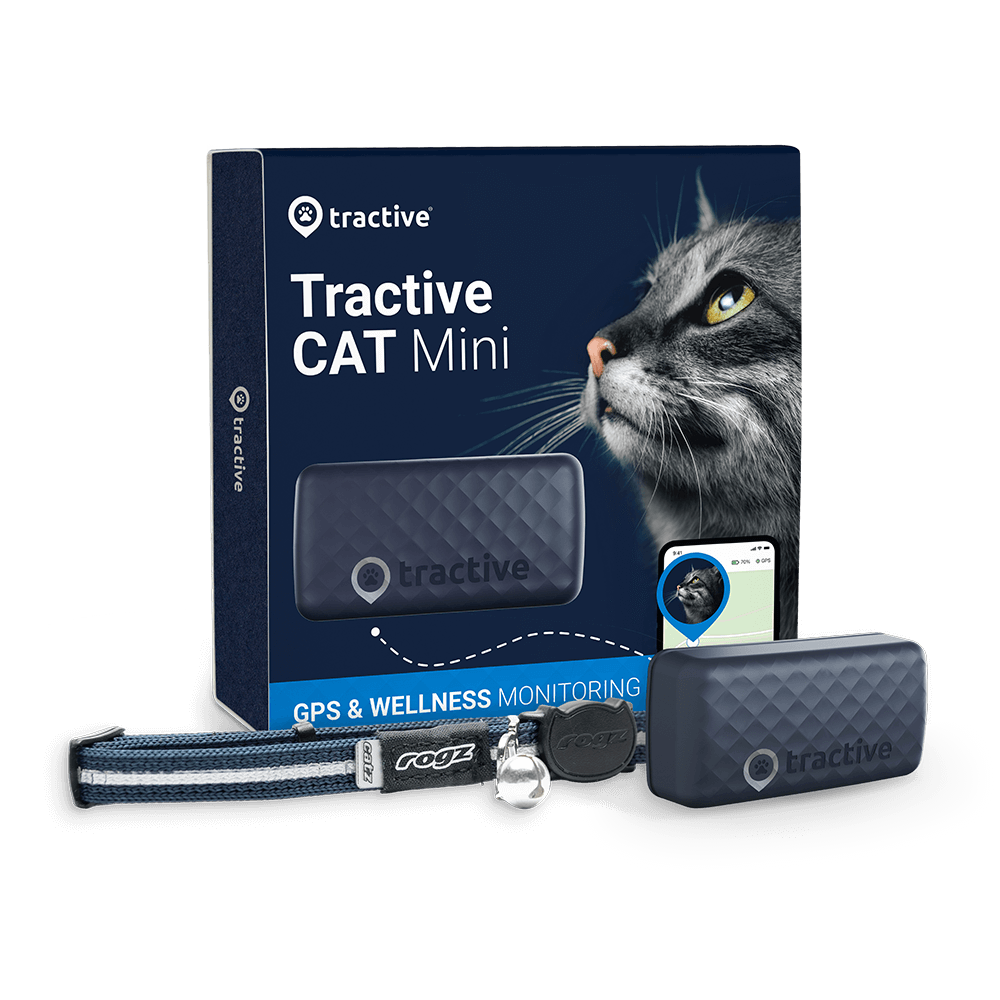
Know everywhere your cat goes
See where they are in real-time, no matter how far they go. Get alerts if they roam too far home. Find out where they’ve been and discover their favorite spots. Let others track with you.

“Tractive is my #1 recommendation when it comes to cat trackers. It’s specifically designed for tracking cats so you are sure that it is safe for your cats to use.”
– Clair Chesterman, Owner of CFA and CCA-registered cattery and fostering company, FluffyMeowPaws
No more dead animals on your porch
Even your purring furball who prefers the indoors has their wild instincts from their feline ancestors. And cat hunting behavior is another reason kitty might get lost if they wander too far outdoors.
So the solution? Make them a less effective hunter. You can attach a bell to their collar, for example, to alert you or other animals (or people) that your cat is nearby.
(So it doesn’t just look cute – it also prevents your cat from wandering too far away from home.)
And also keeps your home free of dead mice, birds, and other prey animals.
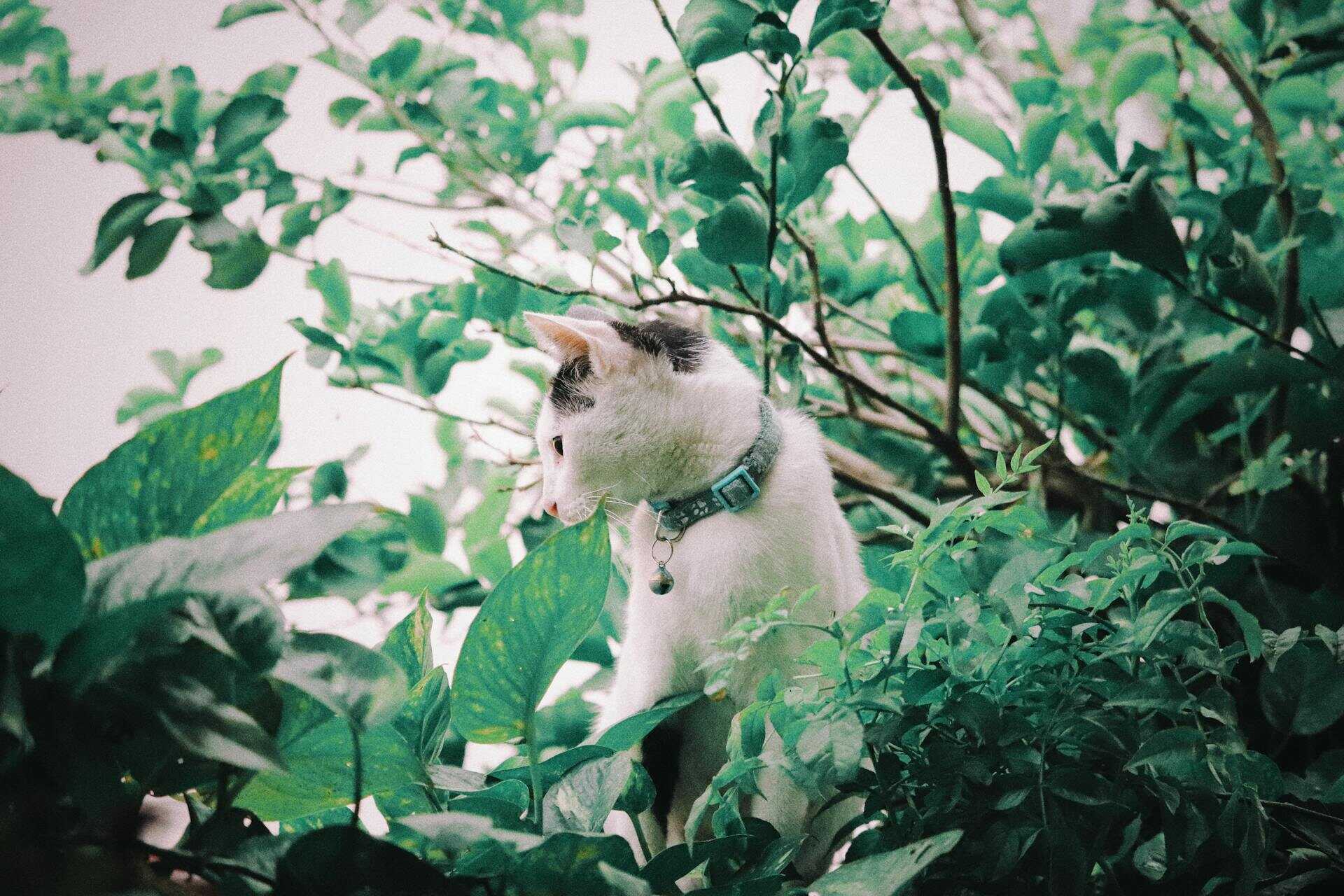
100% peace of mind for you – when tracking your cat
Let’s admit it – keeping tabs on your kitty’s whereabouts all day can get a bit tedious. (Especially if they’re an outdoor cat and frequently on the move.) So what if your cat’s tracking collar could monitor where your cat’s off wandering for you instead?
(Because unless you’re live-tracking your cat every second, you still need to figure out if they’ve escaped or not. But how?)
Simple. Just set up a “safe zone” (like your home and backyard) on your Tractive app – and let your cat’s tracker do the work for you. No need to set up an expensive physical fence or barricade your kitty indoors to prevent them from running off.
Pictured here is Tractive’s Virtual Fence – a 100% shock-free (and stress-free) invisible GPS fence. Which you can whip up in under 5 minutes on your Tractive app…and then rest easy, knowing it’s busy tracking your cat’s location for you in real-time.
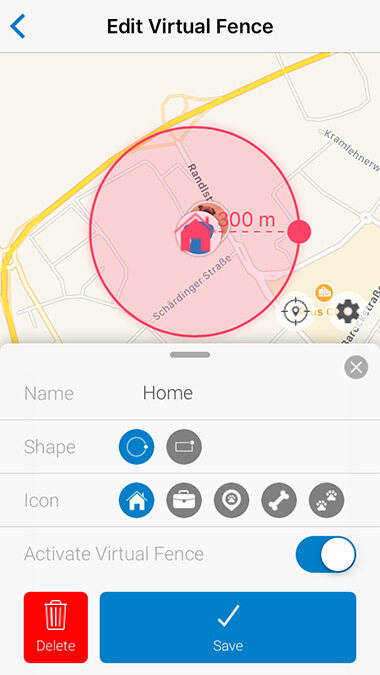

A Virtual Fence is a continuously monitored area that you, the user, create. You can easily move or resize it while still sitting on your couch.
Once you’ve defined a specific area, your Tractive GPS starts monitoring it. As soon as your tracker picks up that your pet is outside a safe zone or inside a danger zone, the system immediately detects a change in the area it’s monitoring. Which means you’ll get a notification right away – so you can intervene and prevent your pet from wandering too far.
– Ivelin Nenkov, Embedded Systems Engineer at Tractive since 2016
Read more:
Do indoor cats need collars?
Yes! Even indoor cats can benefit from getting used to wearing a collar. If your cat somehow slips out of the house, an ID tag on their collar can tell people that this little cutie belongs to you.
And if your cat is wearing a GPS tracker? Even better. Then you’ll be able to follow them in real-time and bring them back home yourself.
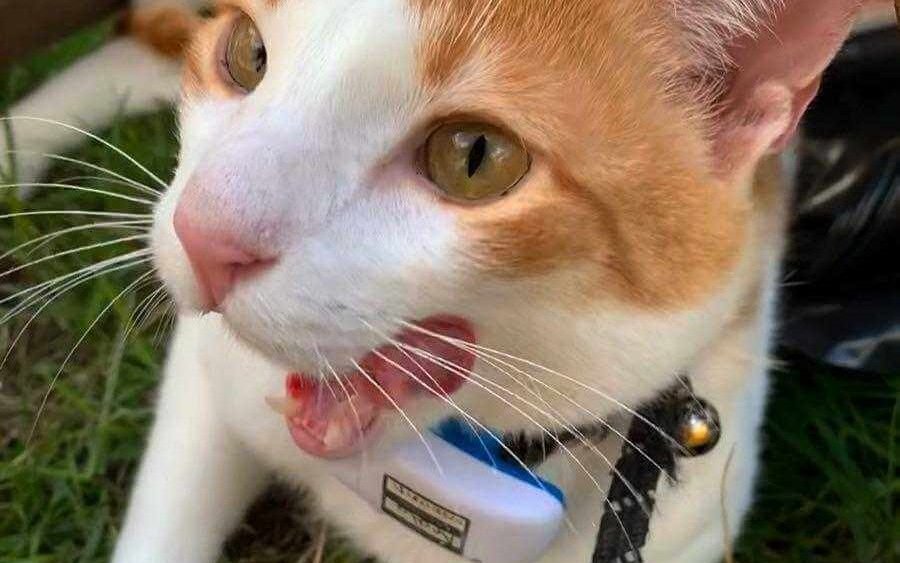
⚠️ Besides getting lost outdoors, your cat might find plenty of opportunities to get lost indoors! Especially if you’ve just moved to a new apartment – and they’re busy exploring their new space.
Which can include narrow crawlspaces, air vents, wardrobes full of your winter coats, or even a basement or attic – where they might get stuck. And from where you might not be able to hear them crying out for help.
Luckily, your trusty Tractive device has you covered. Here are 3 quick and easy ways to locate a pet indoors – using Tractive’s Bluetooth, Augmented Reality, and Light & Sound features.
When should my cat start wearing a collar?
It’s easier for a young cat to get used to wearing a collar than an adult or senior cat. However, even older cats can get used to wearing a collar.
Which is why we recommend you start cat collar training as soon as your cat has reached their full size, when they can safely wear a breakaway collar.
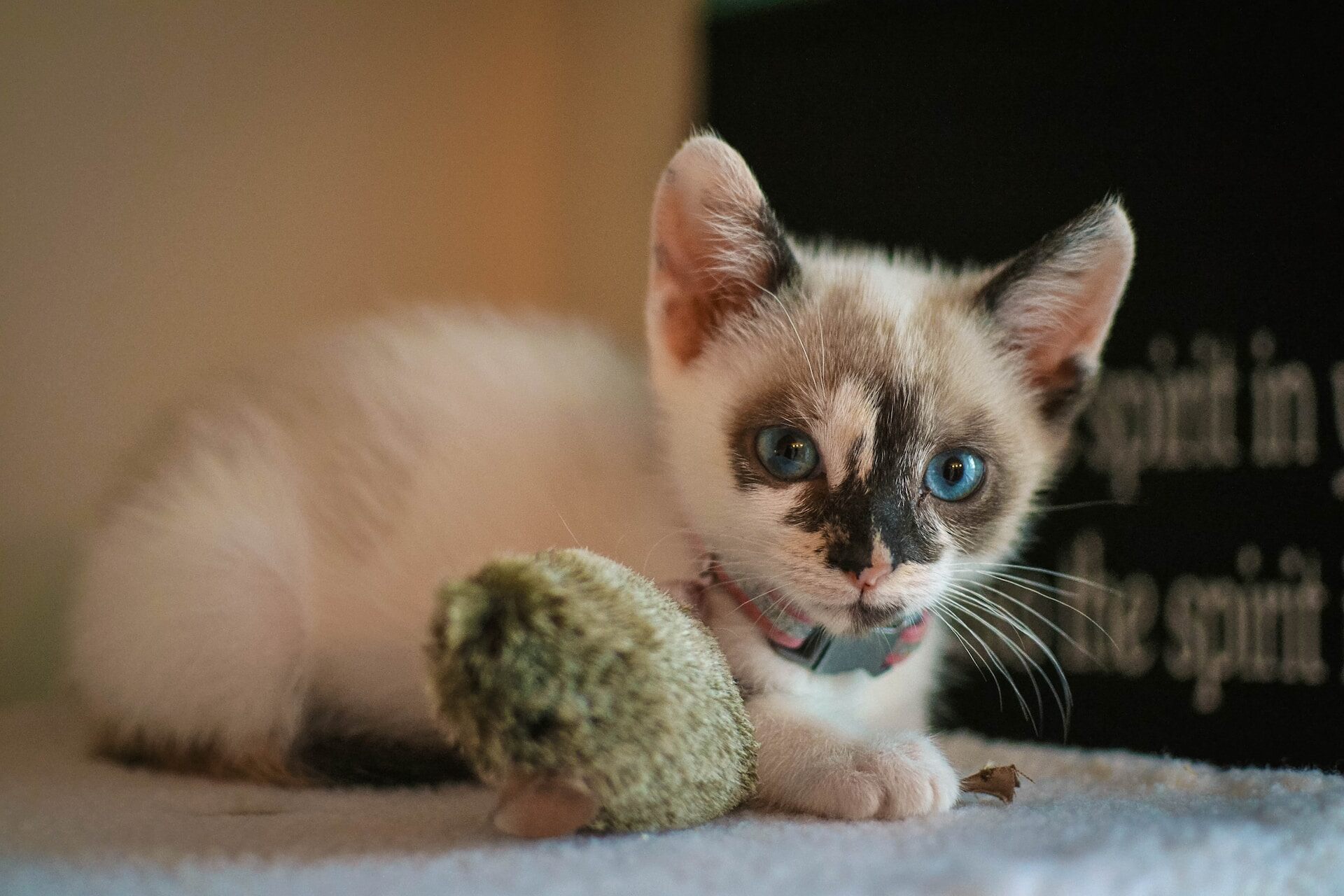
How to train a cat to wear a collar
Step 1: Choose the right (safety) collar
The first step of cat collar training is choosing the right collar for your cat. There are several things to keep in mind.
⚠️ For starters, there is only one kind of collar appropriate for cats – a breakaway or safety collar. This is a special collar that comes off in case pulled on with force.
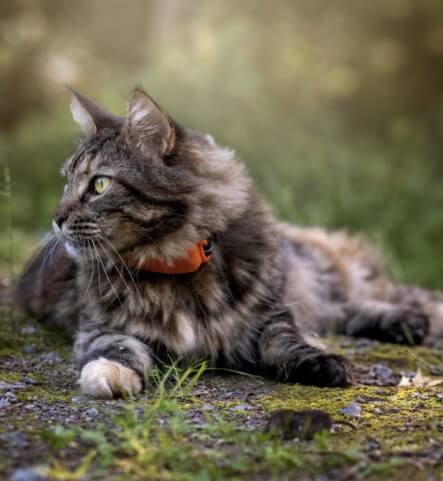
For example, if your cat gets stuck on a tree branch. Or if their collar gets caught on something after your cat (somehow) finds their way under the hood of a car. With a breakaway collar, your cat will be able to get out of a sticky situation.
Put short, a safety cat collar will stay on 99% of the time, but free your cat to avoid them getting hurt or trapped. Plus, with a GPS tracker on their collar, you’ll be able to find where it fell off and bring it back.
💡 Your Tractive device includes a weight-adjustable Rogz Safety Collar. Which secures itself comfortably against your cat’s neck and prevents their tracker from falling off. (Plus, it breaks away to avoid injury.)

⚠️ Never use a collar without a safety release breakaway mechanism on a cat! You want to avoid your cat’s collar getting them stuck in a weird spot without breaking away.
Besides that, consider the following factors when choosing the best cat collar for your cat:
- color
- material
- size
- glow in the dark / reflective qualities
- force required*
*When using a breakaway collar, always make sure your cat meets the minimum weight requirement. This will ensure that their body weight will provide enough force to release the collar if necessary. If your cat is too small or lightweight (for example, a newborn kitten), they may not be able to wear a collar safely.
Step 2: Introduce the collar
Once you have found the right collar, the next step is introducing it to your cat.
- Choose a time when your cat is calm and happy to introduce the collar
- Do it in a place where your cat feels comfortable.
- Set the collar on the floor by your cat and let them begin to sniff, play with and investigate it.
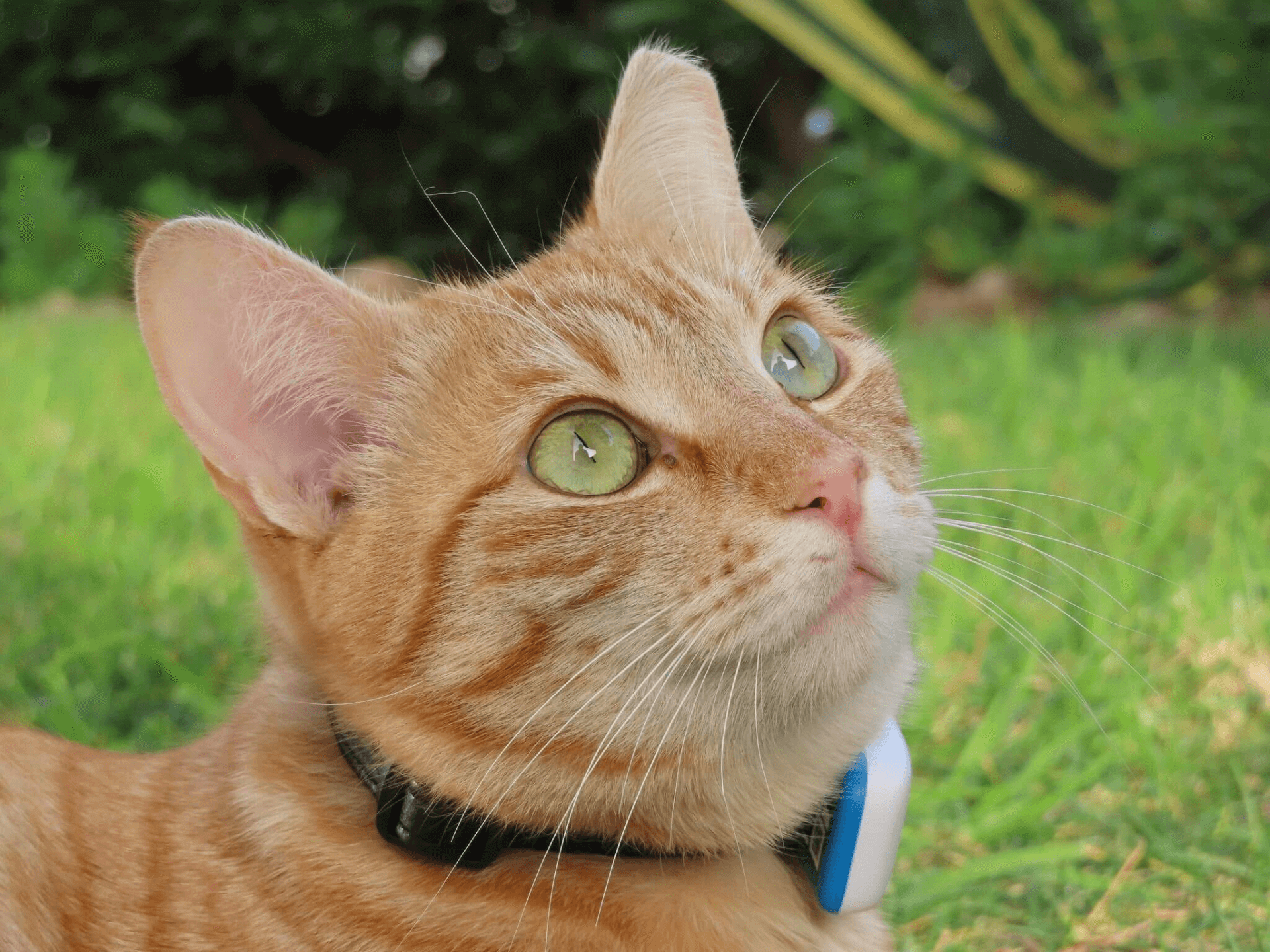
You can also try rubbing the collar on their bed, or rubbing a cloth against your cat and then against the collar. This will pass their scent to the collar and may help your cat warm up to the collar more quickly. If your cat snuggles up to it, reward them with treats.
⚠️ Don’t rush to put the collar on them immediately! If you do so, your cat might:
- get scared
- try to shake off the collar
- build negative associations with the collar
- avoid the collar
So slow and steady wins the race. With some time, patience, and effort, you’ll be on top of your cat collar training and helping keep your cat safe.
We’d also recommend giving your cat small breaks from their collar. (Especially at the beginning, as they’re still getting used to it.) It’s also a good idea to take it off when they’re eating, asleep, or sick.
Step 3: Put the collar on your cat and let them get used to it over time
After you’ve let your cat get to know their new friend, it’s time to put the safety collar on your cat.
- Securely attach the collar around your cat’s neck.
- Make sure it’s properly fitted. Your collar should be snug enough to fit but loose enough that two fingers can fit between it and your cat’s neck.
- Let your cat get used to their collar for a few minutes before taking it off.
- Reinforce your cat’s behaviors throughout the process. Give kitty tons of praise, pets, and a few treats when they comply.
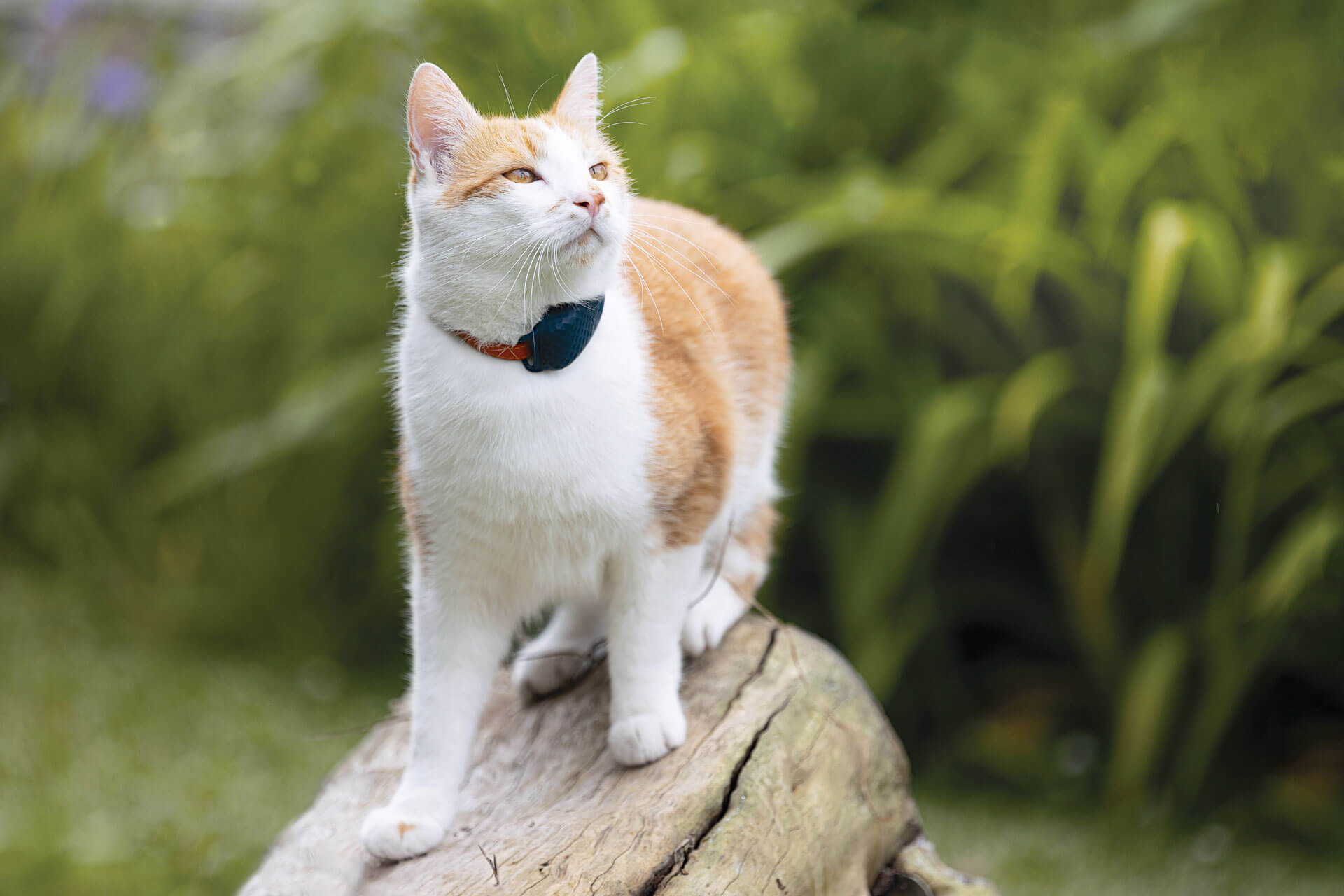
- Stay patient. Never yell at your cat for punish them for wriggling loose from their collar. It just means they haven’t learned to wear it yet. Plus, getting mad at them will just create more resistance as your cat develops a “bad” feeling around the collar.
- If your cat appears disoriented when you first attach the collar, know that that’s normal. Give them time to get used to it, and distract them with food or play, to help them forget they’re even wearing it.
- Practice your cat collar training daily, for increasing lengths of time, until your cat is comfortable wearing the collar.
Once your cat is used to wearing the collar, you can attach an ID tag and GPS cat tracker to the collar and let them outside (if you choose).
Read more: Should I Let My Cat Outside? Pros & Cons Of Indoor vs Outdoor Cats
Be sure to monitor the collar’s fit, and your cat’s behavior regularly. Watch out for any excess scratching, pulling or discomfort, which may indicate you need to change the collar. If your cat has any physical issues (such as an allergic reaction) to wearing a collar, talk to your vet.
Should my cat wear a harness?
In general, it’s best to:
- Use a harness only when you walk your cat on a leash
- Use a safety collar on your cat any time they are roaming free
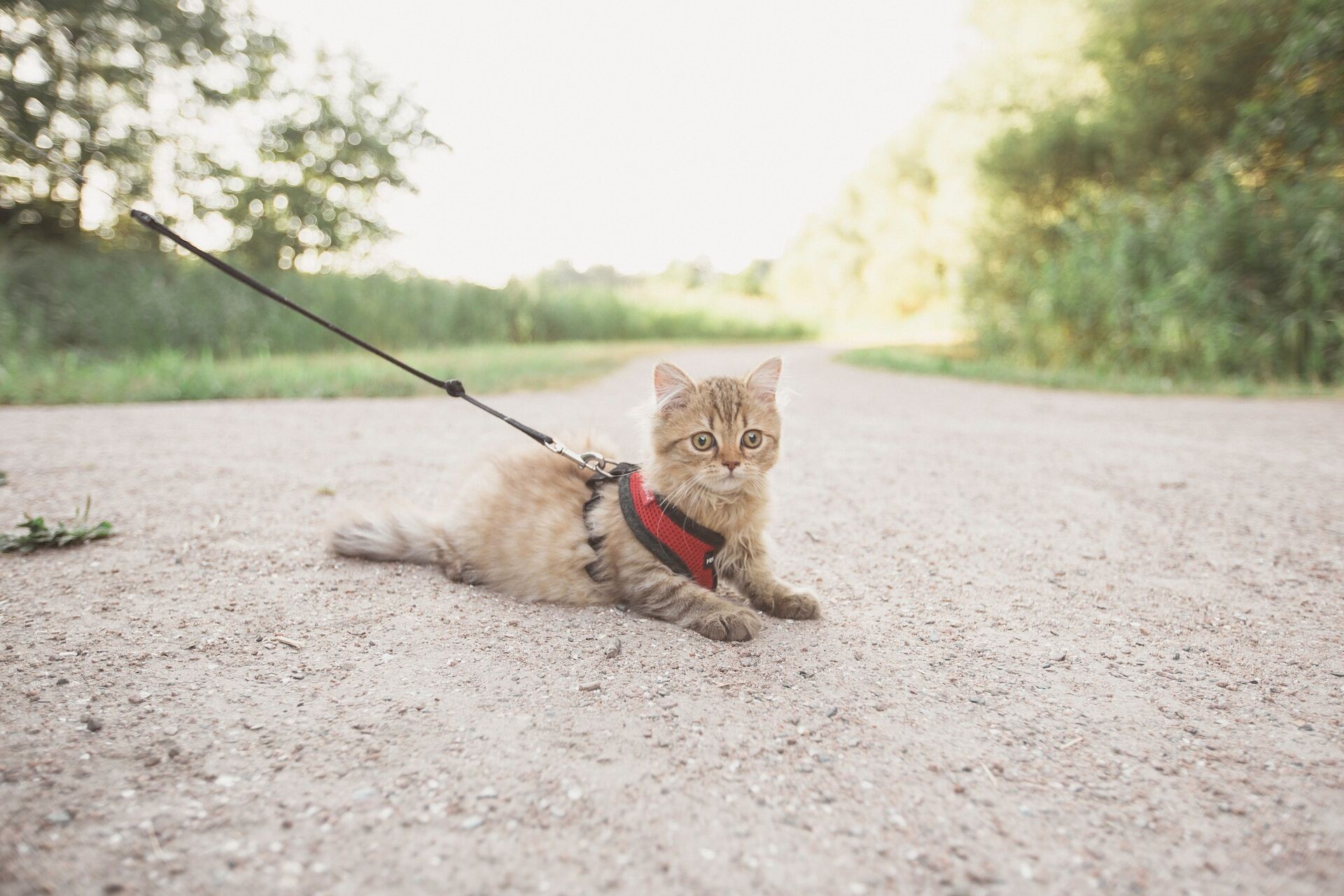
Harnesses could pose a threat to outdoor cats exploring their territory, as they may have difficulty freeing themselves from the harness if it is caught on something.
At the same time, a resourceful cat can even slip out of a harness if particularly motivated.
But in some cases, cats can adjust to a harness with some training and patience. (Pictured in the story below.)
Read more: How To Harness Train A Cat In 7 Easy Steps
So, how to get a cat to wear a collar again?
With some time, patience, and endless praise – most cats can and do adjust to collar training. (No matter their age or temperament.)
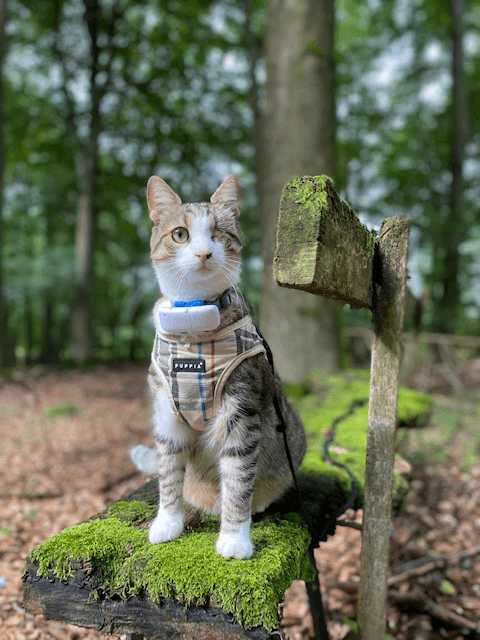
- Just make sure to start slow and gradually familiarize your cat to their new collar.
- Reinforce their behavior when they comply, with pets, praise, and treats.
- Stay patient and allow your cat to gradually ease into their new collar.
- Gradually increase the length of time your cat wears their collar – until they finally get used to it.
Wearing a collar helps other people recognize and ID your cat. Plus you can track them at a moment’s notice using the Tractive GPS Cat Tracker.

However, make sure to only use a collar with a safety breakaway mechanism, and to make sure your cat meets the minimum weight requirement to release the collar.
Before long, your cat won’t even notice the collar is there.
For more information about cat collar and safety tips, check out this video from Berkeley Humane:
And if you’ve found this post helpful, share it with a friend or a loved one – and let’s help build a safer, kinder world for our furry friends together.




